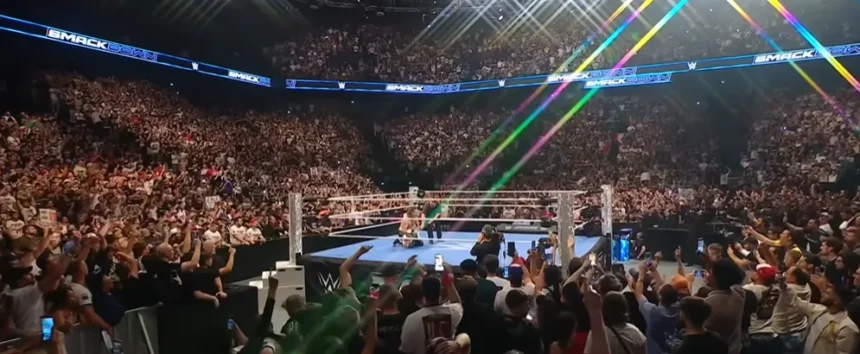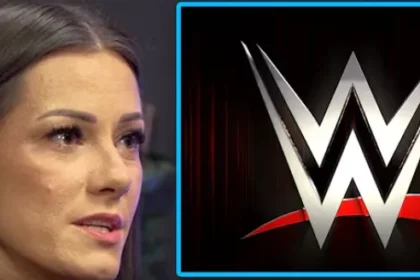A Clash That Changed Everything
WWE fans can remember an indelible moment when, on October 5, 1997, WWE gave the world Badd Blood: In Your House and made a splash in a more dramatic dark side of professional wrestling. It took place in the Kiel Center, in St. Louis, Missouri, and was attended by 21,151 fans who were eager to get something more than the normal fare on Wikipedia.
This was not just a normal show but the start of a Hell in a Cell match, a vicious, unforgiving piece of apparatus that would later become one of the most notorious match varieties in the history of WWE..
What Was the Big Deal?
So far, the WWE PPVs (Pay-Per-Views) primarily featured technical battles and blockbuster plots. But Badd Blood moved the story back into the gothic intensity and bodily spectacle.
The key match was between The Undertaker and Shawn Michaels in the hard-core steel maze of the Cell. This was not wrestling, blood, electricity, chaos. It was a statement. Back behind the scenes, non-verbal conflict, and a surprise act that no one expected.
Enter Kane, The Undertaker’s new brother. One jaw-dropping moment was that he came out of the shadows to smash The Undertaker with a Tombstone Piledriver and gave Shawn Michaels the win that was so well earned and covered in blood that they created a legend in what can be remembered as one of the greatest recurring match types in WWE history Wikipedia.
Historical Context: Why This Was a Game-Changer
The nineties saw WWE seismic changes not only with regard to the style of the ring, but also with regard to the tone of the narrative. Wrestlers were not mere sportsmen anymore; they were personalities, and the audience wanted more in-depth and dramatic plots. The Grim-and-Grit of the Badd Blood match led to the Attitude Era in WWE when the aggressive characters, the provocative advertising, and the cinematics prevailed.
During the mid-90s, WWE experimented with new formulas, character-driven storylines, stunts, and theatrics. The Hell in a Cell was the ideal combination of all things that were developing: sport, primitive emotion, and drama.
Where It Ranks in Reception
Opinions on classics can vary, but critics and fans alike point to Hell in a Cell as the sole reason Badd Blood is remembered at all.
Kevin Pantoja of 411Mania remarked, “The show itself was pretty damn boring until the end. […] This may be because of the emotions after one of their colleagues passed away, but everyone, outside of the Cell match, seemed to kind of mail it in. Speaking of the Cell, it is the only reason you should go see this, and it saves this from being a terrible score. It is one of the greatest matches of all time.” Wikipedia
In short, the Cell match wasn’t just good, it was necessary. Without it, Badd Blood fades into obscurity. With it, the show is unforgettable.
The Match That Defined a Decade
Let’s be real, wrestling is storytelling, and this match wrote a pivotal chapter. It isn’t just a contest; it’s performance art.
- Structure and setting: The Cell created an eerie, claustrophobic stage. The atmosphere was ominous. This wasn’t just another match; it was a trial by steel.
- Emotion over mechanics: Shawn Michaels and The Undertaker held nothing back. Fight or flight became painted in sweat and steel. There’s no redemption arc here, just survival.
- Enter Kane: His debut remains one of the most striking moments in WWE history, a cinematic swerve that flipped the audience’s expectations in a heartbeat.
- Narrative ripples: Kane’s appearance ushered in a twisted chapter in the Undertaker saga, one that would unravel over years of betrayal, redemption, and myth-building.
Legacy: The Echoes of Blood, Steel, and Storytelling
In the raw, edgy world of late-’90s wrestling, Badd Blood was more than a show; it was a turning stone. It showcased how far WWE was willing to push the envelope, how cinematic the ring could become, and how compelling characters could bend reality.
Here are some lasting impacts:
| Impact Area | Description |
| Match Format | Hell in a Cell became a marquee stipulation used sparingly, always with significance, often shaping major story arcs. |
| WWE Storytelling | The influx of cinematic characters like Kane and increasingly layered stories gave birth to emotionally compelling angles. |
| Fan Expectations | Provided fans with drama and danger, no longer was wrestling just about sports; now it was myth-making. |
| Cultural Icon | Hell in a Cell transcended wrestling, referenced in pop culture, gaming, and beyond as the pinnacle of violent spectacle. |
Final Word: A Show Worth Rewatching
Ok, other games in that card were okay. But the Hell in a Cell match inverted the WWE storytelling. It did not have to deal with the question of who won; it had to deal with what it meant: the changing of a narrative, the initiation of a new era, the overlaying of characters, both emboldened and blood-smeared.











